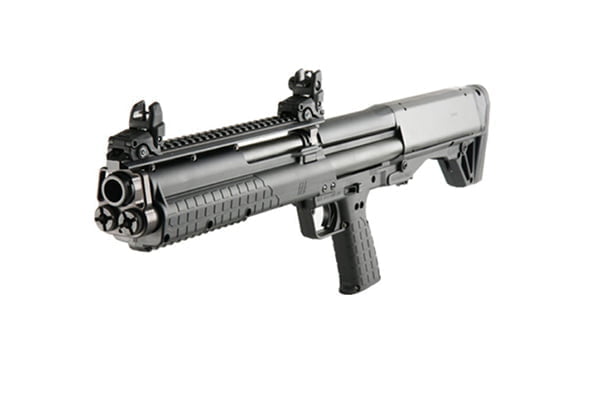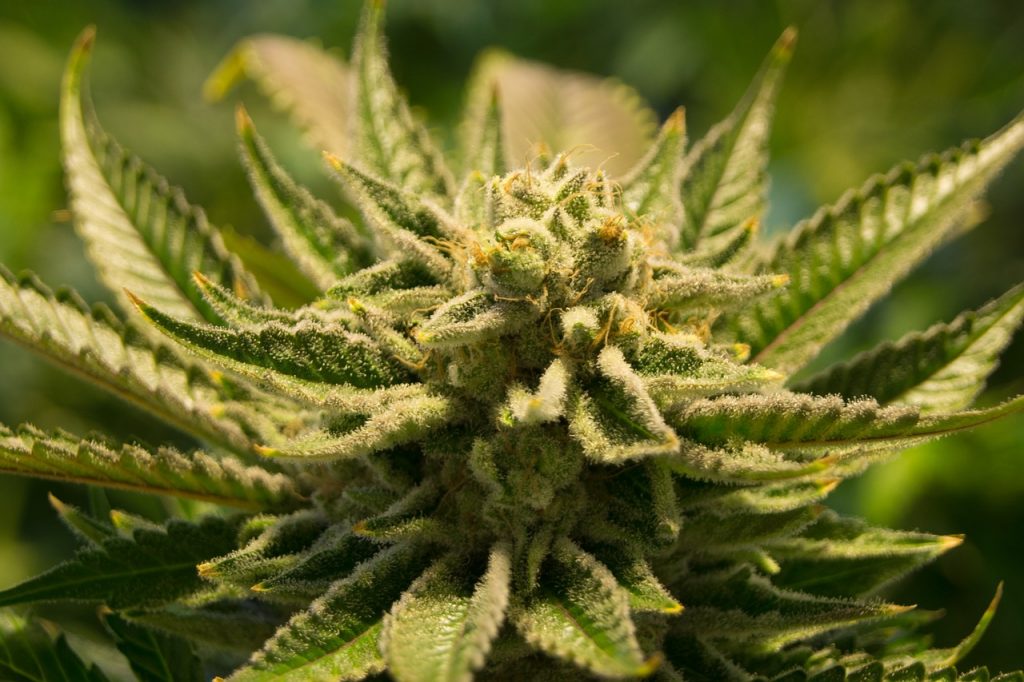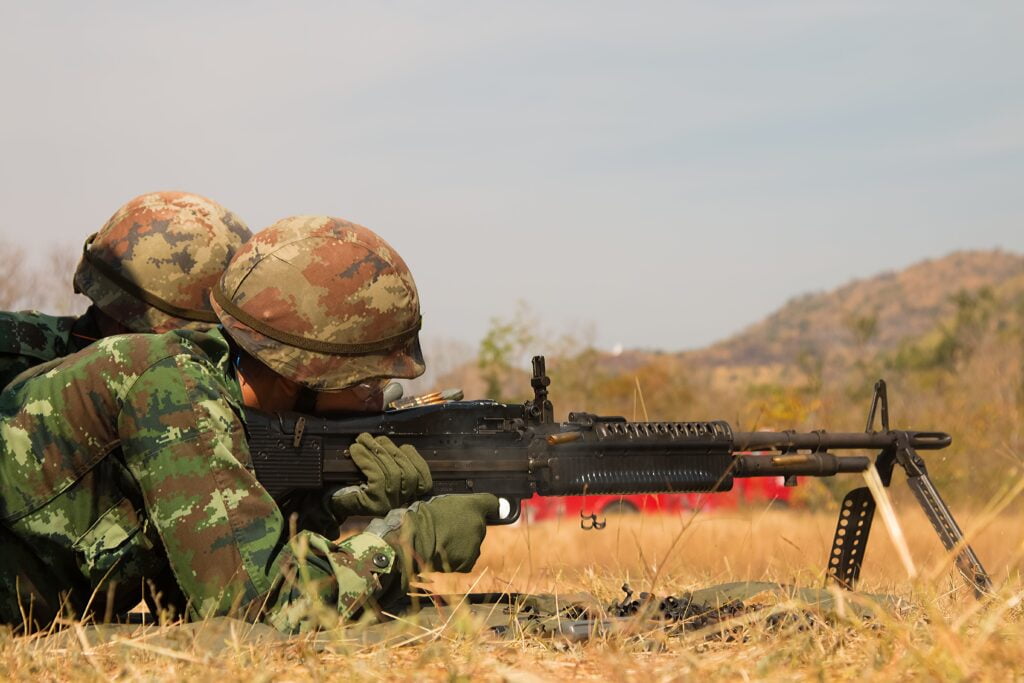
The machine gun, since its inception, has dramatically altered the landscape of warfare. Its ability to deliver sustained, rapid fire has made it a pivotal element in combat, shaping strategies and outcomes of battles across modern history.
The Evolution of Machine Guns in Combat
Early Developments:
- The concept of rapid-fire weaponry dates back to the 19th century, with the invention of the Gatling gun by Richard Gatling in 1862. Designed to reduce the size of armies and show the futility of war, it ironically became a symbol of devastating firepower.
- The Maxim gun, invented by Hiram Maxim in the 1880s, was the first true automatic machine gun. It utilized the recoil energy to eject spent cartridges and reload, revolutionizing military tactics and heralding a new era in armed conflict.
World War I – The Machine Gun Comes of Age:
- Machine guns defined World War I, a conflict where static trench warfare dominated. The Maxim, the Lewis Gun, and the Vickers were widely used, with the Maxim gun in particular causing unprecedented casualties.
- The war demonstrated the defensive power of machine guns, leading to massive losses during frontal assaults and necessitating new tactics, such as combined arms operations and infiltration strategies.
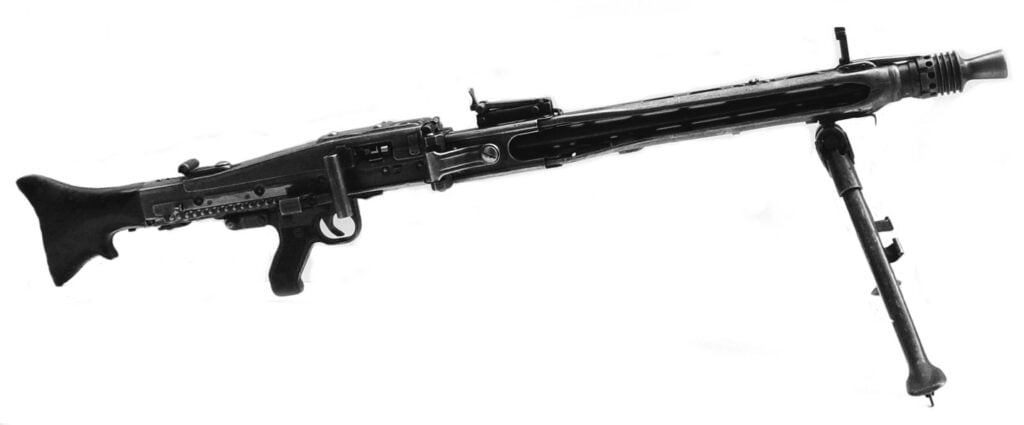
World War II – Refinement and Diversification:
- World War II saw advancements in machine gun technology and deployment. The German MG42, notable for its high rate of fire and reliability, earned the nickname “Hitler’s Buzzsaw.”
- The conflict also saw the widespread use of submachine guns like the Thompson and the MP40, offering soldiers mobility and rapid fire capability in close combat.
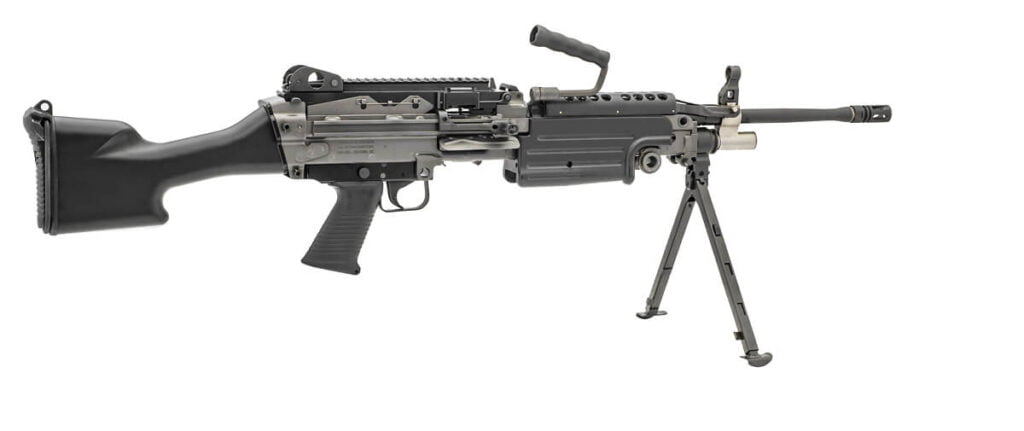
Post-WWII to Present – Technological Advancements:
- The post-war period witnessed the evolution of machine guns into more versatile and powerful weapons. The development of general-purpose machine guns (GPMGs), like the M60 and the FN MAG, allowed for both light and heavy machine gun roles.
- Modern conflicts have underscored the importance of light machine guns (LMGs) and squad automatic weapons (SAWs) in providing infantry units with mobile firepower support. The M249 SAW is a prime example, offering the capability to lay down sustained fire without the weight of traditional machine guns.
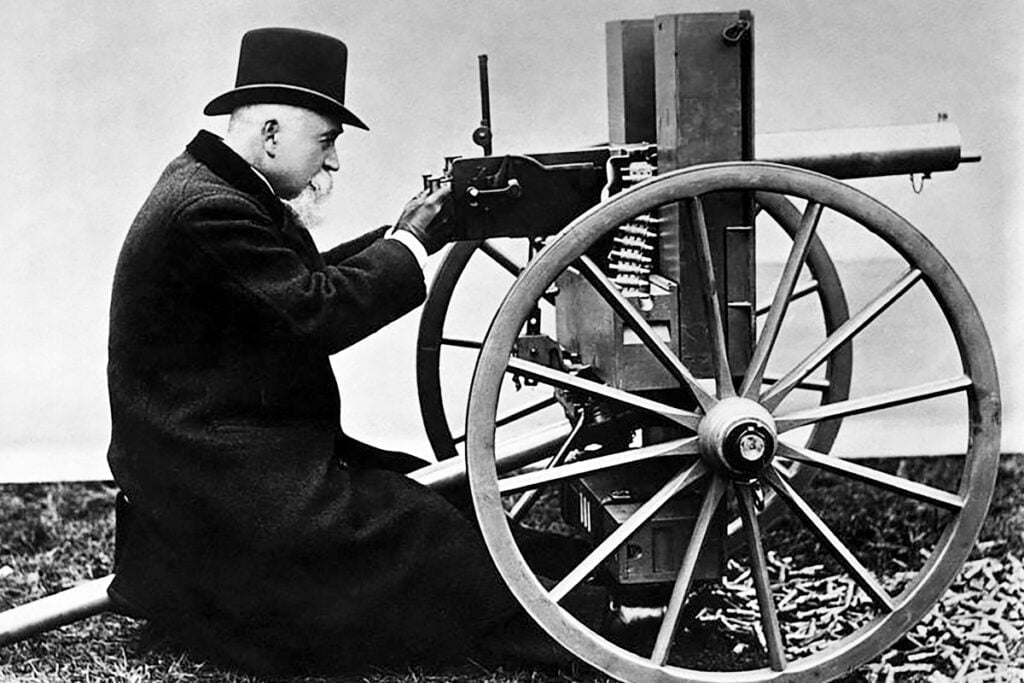
The Most Important Machine Guns in History
1. Maxim Gun (1884)
The world’s first automatic machine gun, it revolutionized warfare with its ability to sustain fire for extended periods, using the energy from recoil for reloading. Predominantly used by British and German forces, its impact was particularly felt during colonial wars and World War I, where it contributed to the high casualty rates in trench warfare, earning a grim reputation for its efficiency in slaughter.
2. Browning M2 (1918)
The Browning M2 machine gun, also known as the Ma Deuce, was invented by John Browning in the late 1910s. The development of the M2 began towards the end of World War I, with the final design coming in 1918. However, it was not until 1933 that the M2 was standardized for production and entered service. The Browning M2 has seen extensive use in various conflicts around the world and remains in use to this day due to its reliability, versatility, and powerful .50 BMG (12.7mm) cartridge.
3. MG42 (1942)
A marvel of German engineering, known for its rapid rate of fire, reliability, and ease of manufacture. Its design influences modern machine guns. The MG42’s design featured innovations such as a quick-change barrel system and stamped metal parts, making it both efficient in combat and simple to manufacture. Its legacy extends beyond World War II, as it influenced the development of many post-war machine guns.
3. M60 (1957)
The United States’ response to the need for a versatile GPMG, serving in various roles from the infantry level up to mounted applications in aircraft and vehicles. The M60 machine gun, nicknamed “The Pig” for its bulkiness, was introduced in 1957. It became a staple of the U.S. military during the Cold War era, notably in the Vietnam War.
It is a general-purpose machine gun that fires the 7.62×51mm NATO cartridge, The M60 features a gas-operated, belt-fed, air-cooled design, with a rate of fire around 500-650 rounds per minute. Despite its weight and the need for frequent maintenance, the M60 was valued for its firepower and adaptability, serving the U.S. and allied forces for decades before newer designs gradually replaced it.
4. AK-47 (1947)
While primarily an assault rifle, its reliability, ease of use, and automatic fire capability have made it a staple in guerrilla warfare and conflict zones around the world. The AK-47, designed by Mikhail Kalashnikov in the Soviet Union and officially adopted in 1947, is one of the most iconic and widely recognized assault rifles in the world.
Renowned for its durability, reliability, and simplicity, the AK-47 operates in harsh conditions with minimal maintenance. It fires the 7.62×39mm cartridge, offering a balance between range and stopping power. The rifle’s design features a gas-operated, rotating bolt mechanism, and it has been produced in countless variations worldwide. Its ease of use and manufacturing, combined with effective performance, have made the AK-47 a preferred choice in military, insurgent, and civilian hands across the globe.
Get an AK-47 semi-automatic rifle here.
5. M16 (1964)
The M16 is actually an assault rifle, not a machine gun, but it’s here for a sense of proportionality. The M16 rifle, designed by Eugene Stoner, was first introduced to the U.S. military in 1964. It was developed to replace the heavier M14 rifle, offering a lighter, more manageable weapon chambered for the 5.56×45mm NATO cartridge. Its adoption marked a significant shift towards high-velocity, small-caliber rounds for infantry use.
The M16 features a gas-operated, air-cooled, magazine-fed design, with a distinctive carrying handle and triangular handguards in its early versions. Over the years, it has undergone several modifications, resulting in various models and enhancements to improve its reliability and functionality in diverse combat situations.
Of course the modern day AR-15 evolved from this rifle, but we have to make do with a semi-automatic rifle.
6. M249 SAW (Squad Automatic Weapon) (1984)
Introduced to provide infantry squads with the firepower of a machine gun combined with the mobility of a rifle, it has seen extensive use in recent conflicts. The M249 SAW (Squad Automatic Weapon), introduced to the U.S. military in 1984, is a light machine gun that serves as the squad-level automatic weapon in infantry units.
Chambered for the 5.56×45mm NATO cartridge, it provides squads with the firepower of a machine gun combined with the accuracy and portability of a rifle. The M249 is belt-fed, air-cooled, and gas-operated, featuring a quick-change barrel that allows it to sustain fire and adapt to prolonged engagements. It can feed from M16 magazines in emergencies. The M249’s balance of firepower, reliability, and mobility has made it a cornerstone of U.S. infantry operations.
Conclusion
The machine gun has been a defining tool of military might, its evolution closely tied to the history of modern warfare. From the Gatling and Maxim guns of the 19th century to the versatile and powerful weapons of today, machine guns have continuously shaped the tactics and outcomes of battles. As technology advances, so too will the capabilities of these formidable weapons, ensuring their place in the arsenals of armed forces worldwide.
FAQ for Machine Guns Blog Post
1. What defines a machine gun?
A machine gun is a fully automatic firearm capable of firing bullets in rapid succession from an ammunition belt or magazine. Unlike semi-automatic firearms, which require a separate trigger pull for each shot, machine guns continue to fire as long as the trigger is pressed and there is ammunition. They are designed for sustained fire, often mounted on bipods, tripods, or vehicles, to provide continuous cover fire in combat situations, supporting infantry movements or defending positions against enemy advances.
2. How did the machine gun change warfare?
The introduction of the machine gun fundamentally changed warfare by increasing the firepower available to individual units, making it possible to hold off larger forces with fewer soldiers. Its devastating efficiency in defensive roles led to the entrenchment tactics seen in World War I, causing massive casualties and necessitating new offensive strategies, including tank warfare and combined arms tactics. Over time, machine guns have continued to evolve, playing crucial roles in both offensive and defensive operations across various conflicts.
3. What are the differences between light, medium, and heavy machine guns?
Light machine guns (LMGs) are designed for mobility and are often carried by individual soldiers; they provide direct fire support for infantry. Medium machine guns (MMGs) offer a balance between the firepower of heavy machine guns and the portability of LMGs, requiring mounting for stability and are used for sustained fire. Heavy machine guns (HMGs) are the most powerful, designed for long-range, sustained fire, often used against fortified positions or light vehicles, and typically mounted on tripods or vehicles due to their weight and recoil.
4. Can civilians own machine guns?
In some countries, including the United States, civilians can own machine guns, but there are strict regulations. In the U.S., the National Firearms Act of 1934, the Gun Control Act of 1968, and the Firearm Owners’ Protection Act of 1986 heavily regulate the ownership, transfer, and manufacturing of machine guns. Civilians can only legally own machine guns that were manufactured and registered before May 1986, and they must undergo a thorough background check, pay a tax, and register the weapon with the Bureau of Alcohol, Tobacco, Firearms and Explosives (ATF).
5. What is the future of machine guns in military operations?
The future of machine guns in military operations likely involves advancements in technology to make them more effective, reliable, and adaptable. This includes the integration of advanced sighting systems for improved accuracy, the use of lighter materials to reduce weight, and possibly the incorporation of smart technology for target acquisition. Additionally, as warfare evolves with the increased use of drones and automated systems, machine guns may see new roles or adaptations to counter these threats effectively.

